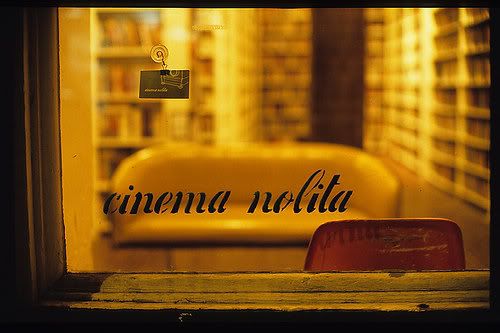
Indiana Jones and the Kingdom of the Crystal Skull is not a masterpiece. It will never be confused with
Citizen Kane or
Ikiru or even
There Will Be Blood or
No Country for Old Men. And its sole reason for being made seems to be to remind moviegoers that it has no reason to be. It is a purely fun, action-packed adventure - a cinematic ice cream sundae smothered in the hot fudge of nostalgia.
The Indiana Jones series was born out of nostaligia - Spielberg and Lucas set out to create a modern update of the cliffhanger serials they had loved in their youth. Thankfully, they made
Raiders of the Lost Ark in a time before DVD, so they weren't able to revisit
Ace Drummond or
The Jungle Menace to use them as reference points. The reason
Raiders is so much better than any of the 30's and 40's serialized adventures - even the very best ones directed by the gifted and underrated William Witney - is because Spielberg and Lucas had a rose-tinted view of said films, having watched them before the jadedness of adulthood kicked in.
How fitting then, that the cycle should continue, and the Indiana Jones series would become such an enormous part of my generation's childhood. Like so many other movies in my life, I am completely unable to look at them objectively in any way - they are so intrinsically tied to my own nostalgia. I often wonder if, for example, what I might think of films like
The Goonies and
Beetlejuice if I had never seen them before, and were watching them today, at the age of 21. I saw Star Wars when the trilogy was re-released in theaters at the age of nine, and it is the reason I decided to become a filmmaker - but I wonder if I saw it for the first time right now, would I think it was ridiculous and silly? I would like to think that
Raiders of the Lost Ark is a strong enough film that it would still enthrall and captivate my hypothetical, somewhat cinematically ignorant, alternate-universe self - but I really have no way at all knowing.
Crystal Skull is seemingly made for viewers exactly like me. Nobody who didn't grow up loving and idolizing Indiana Jones has any business seeing this movie. This is our party, and they're just not invited. Although Spielberg's direction seems to indicate a faint air of bittersweetness that audiences are more interested in seeing him make popcorn films than uncompromising, adult fare like
Munich (indicated at the very start of the film, as the Paramount logo fades into a mound of dirt surrounding a gopher hole), he still seems happy to be back in the saddle again, as we are right along with him.
Nobody has tried to hide the fact that a decade and a half has passed since
Last Crusade, and yet the film still has heaps of nostalgia for the Eisenhower era. We revisit
American Graffiti's universe of malt shops, greasers, poodle skirts and leather jackets, while replacing the Nazis as foes are the two things it seemed everyone in America was most frightened of in the 50's - Commies and little green saucermen. For all the fuss people whipped up about how Harrison Ford would fare in the role as an "old man," every doubt was pretty much rendered moot from the moment he first appears onscreen. Indiana Jones was always rather cranky, sarcastic, and world-weary, and if anything, he only seems to have grown into those qualities. He has one of those faces that doesn't seem to have gotten wrinkly, just more leathery and weatherbeaten. Like Clint Eastwood, he is one of those actors who will never cease to be a pillar of cool. The hat still fits.
The titular crystal skull feels like something of a macguffin, more like the mystical glowing stones in
Temple of Doom than the more metaphorically weighted quests for the Ark of the Covenant and the Holy Grail in the first and third films. Having said that, it is still one hell of a fun adventure with almost everything you'd hope for. John Hurt and Ray Winstone's supporting characters are a trifle underwritten, and it was a bit much to see Shia LaBouf swinging through the jungle vines like Tarzan, calling on the aid of his monkey friends during a lethal jeep chase. But, to paraphrase the second-greatest Harrison Ford character, the film has "got it where it counts, kid." Where it really counts, here, is the love story between Indy and Marion, which couldn't have been handled better. From their first meetup after many years and the continuous barrage of Hawksian banter that flies back and forth from thereon afterwards, you know it was fated to be - as if there was any doubt anyway. And Karen Allen still looks beautiful, by the way - it's a testament to how much so that when she was standing right next to Cate Blanchett, who plays a Russian-accented, saber-wielding dominatrix with a Louise Brooks haircut, all I could think to myself was "Damn, Karen Allen is so gorgeous!"
It's not a film for critics, for Spielberg naysayers who go in hoping to see a fluffy mess (of which there are many - and if you ask me, they are the same people, who had they been around in the 50's, would've lambasted Hitchcock for being too user-friendly), and it's not even a movie that will please all Indiana Jones fans. But for me, it was a blast, and made me feel like I was ten again, which is what I believe is exactly what it set out to do.







